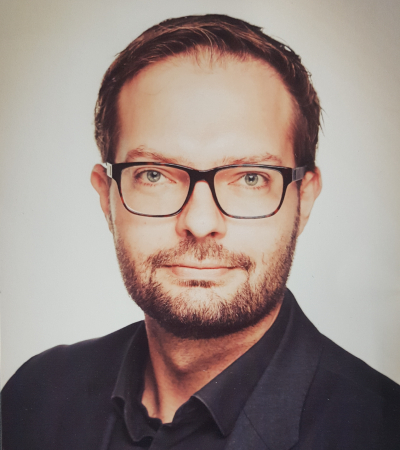Fighting Domestic Extremism: Lessons From Germany
The clear threat of right-wing extremism demonstrates the need for a broad-based approach to CVE.

Published by The Lawfare Institute
in Cooperation With

Editor’s Note: As the Biden administration wrestles with the challenge of white supremacist and anti-government extremism, there is much to learn from other countries. Drawing on Germany’s experience, Daniel Koehler of the German Institute on Radicalization and De-Radicalization Studies offers a set of lessons for the United States.
Daniel Byman
***
As the U.S. Capitol insurrection, the prevalence of the QAnon conspiracy, and widely believed claims of election fraud indicate, potentially tens of millions of Americans are outside the consensus on the most fundamental U.S. democratic values: faith in official election results and the peaceful transfer of power. As a German, I am frightfully reminded of the Weimar Republic, which resulted in the end of Germany’s first democracy and the rise of domestic extremism from within. Modern Germany is built on the legacy of the failure of its first democratic experiment and the unspeakable global suffering and destruction that followed. This legacy has been deeply ingrained in post-World War II Germany’s philosophy of “militant democracy”—the idea that toxic and poisonous ideologies can spread within a population to sow distrust and anger against the political order and its most fundamental values. The success of German democracy today indicates Germany’s ability to overcome its previous failure and offers lessons for the United States as well as other countries seeking to counter extreme ideologies.
Stopping and reversing the spread of toxic extremist ideologies is a herculean task. Preventing and countering violent extremism (P/CVE) programs have been developed to tackle this challenge. One lesson is central: Reestablishing positive and trust-based social relationships among communities across ideological divides to experience the failure of black-and-white, us-versus-them extremist ideologies is of the utmost importance. To succeed in this, P/CVE programs and strategies need a solid structural base and support from national leadership.
The United States has already looked to Germany for help. One of the first attempts to introduce “deradicalization” (targeted toward dismantling extremism among ideologies’ most committed adherents to mitigate future threats of terrorism) began in 2016 at the federal court in Minneapolis, led by a group of determined federal judges and probation officers convinced that it is simply impossible to incarcerate a way out of extremism. At the time, German expertise was sought to learn from and adapt. Germany has many more lessons to offer when it comes to fighting the extreme right.
This process suggests U.S. P/CVE is not still at the starting gate—but it is not very far away from it, either. As a recent overview on the P/CVE landscape in the United States argued: “CVE programs have had many bosses, quite a few iterations and little coherency.”
Today, Germany is one of several countries championing P/CVE. Just recently, after a wave of right-wing terrorist attacks, the German government decided on an 89-point action plan to counter racism and domestic extremism, including a 1 billion euro funding scheme for various measures over the coming years. This plan holds many lessons for the United States, but here are some of the most important.
First, any P/CVE scheme needs a diversified funding basis. In Germany, financial support for P/CVE programs is available for individual projects at the federal, state, and municipality levels. While in the United States P/CVE funding is so far channeled mainly through the Department of Homeland Security, Germans have learned that mental and public health, education, or social departments can have mutually beneficial funding programs for P/CVE entrepreneurs. This allows for nongovernmental organizations (NGOs) to choose a mix of funding sources that does not run the risk of alienating their constituencies or target groups. Some local NGOs, for example, have been hesitant to accept funding connected to security agencies. Several Muslim groups rejected funding from the Department of Homeland Security after the 2016 election because they did not want to be perceived as part of an Islamophobic administration responsible for policies like the Muslim ban. P/CVE was criticized as “junk science [that has been] proven to be ineffective, discriminatory, and divisive[,]” and many Muslim communities have feared such initiatives as being inherently anti-Muslim and tools for law enforcement and intelligence agencies to criminalize them. In Germany, two lessons are important in this regard: to always include a variety of extremist ideologies as targets of the programs being funded, especially racist and extreme right ones, and to fund programs focused on community, education, or mental health without any law enforcement or intelligence involvement. It is always bad policy to single out one particular form of violent extremism or specific program types in broader P/CVE strategies; there has to be space for a multitude of actors to find their place within P/CVE. The recently announced $77 million Homeland Security grant program to combat domestic terrorism and extremism should aim to avoid past mistakes in funding P/CVE by supporting diverse types of programs focused on a range of ideologies. Luckily, research has shown that P/CVE programs, in principle, have retained public support at the national level.
Second, the Biden administration must clean house in the military and federal law enforcement agencies to show determination, commitment, and transparency in the fight against decades-long infiltration attempts by domestic extremists. The recent 60-day stand down to determine the right course of action in the U.S. military is a good start. In a 2019 policy brief for the International Center for Counter-Terrorism in The Hague, I collected some of the most important measures needed to fight extremism in the military. Regular release of consistent statistics, a military intelligence service tasked with identifying and rooting out extremism in the ranks, and training courses for commissioned and noncommissioned officers to spot extremism and adequately handle it are essential. German intelligence services have released annual reports on the state of extremism since the 1970s that can serve as a model for the United States. These reports include numbers of active extremists, details of crimes committed by them, summaries of extremist group activity and other key information. It would be very difficult for policymakers to ignore federally reported extremist activities in each state, especially if reports are public and allow media and NGOs to follow up. Transparency and consistently provided high-quality information is key for experts, policymakers and P/CVE programs to create the most adequate responses.
Third, quality standards and professionalization are absolutely key in P/CVE. Without oversight, these programs could waste valuable resources or even risk worsening problems that contribute to domestic extremism. Ill-designed P/CVE programs using approaches unsupported by research and evidence can do more harm than good. Using the wrong counseling method, for example, could prompt a response that increases a participant’s extremist convictions, and untrained mentors might be unaware of signs of self-harm and threat to others. It is important to offer clear guidance on what kinds of personnel training and skills should be required and what kinds of minimum standards a program must meet to acquire federal funding. Currently, there are no bachelor’s or master’s degree programs in P/CVE, something that is urgently needed to build a well-trained and highly professional pool of specialists who can meet the increasing demand for such programs. In Germany, governmental institutions on the federal and state levels have created P/CVE training programs and centers to help mitigate this core weakness of today’s global P/CVE landscape. However, facing the enormous task of building a professional P/CVE field of practice requires the combined power of the academy and its specialist training infrastructure.
Fourth, the United States must recognize that there is no single ideal P/CVE program. In fact, there are a multitude of different types of P/CVE programs, each focused on different goals and target groups, and drawing on different actors to carry them out. To name only a few of the most widely implemented types: early community-based intervention and resilience programs, prison-based deradicalization programs for convicted terrorist and extremist offenders, family support and counseling programs, and school-based prevention educational programs. Here, public-private partnerships are the key to success. It is the combination of the strengths of governmental and nongovernmental actors that make P/CVE more effective. Communities and law enforcement, for example, have their place in P/CVE, depending on the program type and goal. In Germany, police agencies and intelligence services have a long and well-established track record of running their own deradicalization programs for high-risk offenders, sometimes in close cooperation with civil society actors. NGOs are also highly active in this field. For these partnerships to work, it is fundamental that participants start with mutual agreement on responsibilities, definitions and quality. In short, better communication about the complex nature of various P/CVE program types might help communities see the potential these tools hold for them. Ideally, P/CVE creates a situation in which communities are empowered in such a way that law enforcement and intelligence are kept away by having no need to investigate or step in. When they do, forced by their mandate, good P/CVE ensures that communities retain a seat at the table and that their voices are heard. All of this gives power back to communities.
Breathing life back into a fledgling P/CVE landscape that the Trump administration has left in ruins will require large investment and commitment from the Biden administration, Congress, academia and nongovernmental entrepreneurs. The very first step must be to clearly signal that the new administration will confront the threat of domestic extremism.





